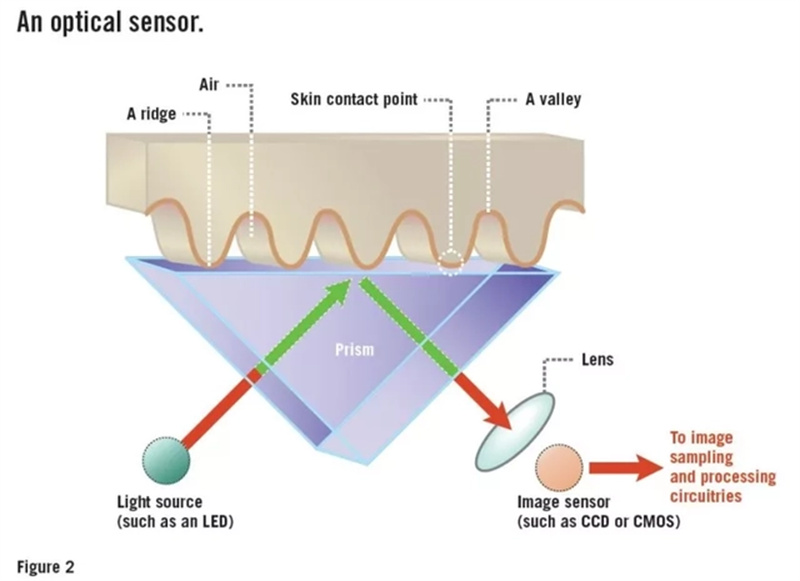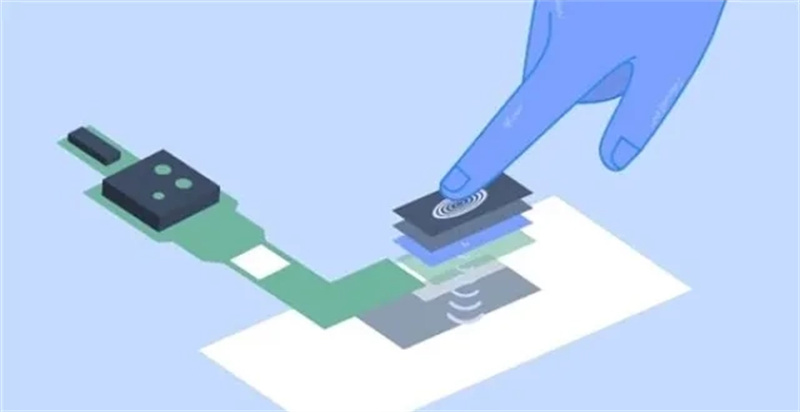
With the development in recent years, fingerprint recognition technology has become the biometric technology with the highest share in the smart terminal market and mobile payment market. The current mainstream fingerprint recognition technology can be roughly divided into three types: capacitive, optical and ultrasonic.
1. Capacitive Fingerprint Recognition Technology
Capacitive fingerprint recognition is the earliest fingerprint recognition technology. It mainly uses the contact between the silicon wafer and the electrolyte on the skin to form an electric field. The sensor can record the uneven shape of the fingerprint for the user to unlock. From a theoretical perspective, capacitive fingerprint recognition needs a medium for transmission. Simply put, it needs something like a button to carry it. In the era of full screens, mobile phone manufacturers design it as a rear fingerprint unlocking or a side button fingerprint unlocking. At the same time, this kind of fingerprint unlocking requires relatively high dryness of fingers, and it is impossible to unlock the mobile phone with wet hands, so there are few mobile phones using this technology on the market today.

In recent years, users' demand for mobile phones has tended to be comprehensive in terms of large screens, lightweight body, and beautiful appearance. Mobile phone screens are also transitioning from LCD screens to OLED screens. An off screen fingerprint recognition scheme based on OLED screens has emerged. Placing the fingerprint sensor at the bottom of the screen also gives users a stronger technological experience during fingerprint recognition.
There are currently two implementation methods for off screen fingerprint recognition: optical and ultrasonic.
2. Optical Fingerprint Recognition Technology
Optical fingerprint recognition is a popular fingerprint unlocking technology nowadays. This fingerprint recognition technology is a leap forward compared to capacitive fingerprint recognition, moving the fingerprint to the screen and saving space on the phone. The principle is very simple, mainly utilizing the reflection and refraction of light. When the finger is pressed on the screen, the screen will emit a bright light to illuminate the fingerprint, which will be reflected and refracted, transmitted to the sensor below the screen for recognition, thus achieving fingerprint unlocking.
At present, this fingerprint recognition technology is relatively mature, and almost all mobile phone manufacturers will use it, and user satisfaction with this technology is also acceptable. However, like capacitive fingerprint recognition, it is difficult to unlock fingerprints when the hands are wet, and after applying individual tempered glass film, the unlocking of mobile phone fingerprints may also fail. Both of these situations are caused by the refraction of light. When the fingerprint passes through water or a tempered film, it intensifies the degree of light refraction and inevitably leads to failure. Therefore, most mobile phone manufacturers advise users to use appropriate phone film when leaving the factory to avoid fingerprint failure.

3. Ultrasonic Fingerprint Recognition Technology
Ultrasonic fingerprint recognition is a relatively new fingerprint recognition technology. Its principle is mainly based on the pressure reading of the sound waves reflected by the skin, so as to map out the sound waves of the fingerprint, which can be unlocked after the transducer is recognized. From a principle point of view, compared with the previous two fingerprint unlocking technologies, the ultrasonic fingerprint recognition technology uses three-dimensional recording and sound wave transmission, and does not require very high finger details. Therefore, even if the hands are wet, the fingers are stained or even the screen is wet, the phone can be unlocked without affecting the sensitivity at all.
At the same time, when entering a new fingerprint, it does not need to be repeatedly entered. It only needs to press the fingerprint recognition area lightly, and the fingerprint can be entered once, so that the user can unlock it multiple times. This technology can be said to be a good solution to the common problems of capacitive fingerprint recognition and optical fingerprint recognition technology. The requirements for finger details are minimized, and the security is also improved a lot. But there is still a problem, even ultrasonic fingerprint recognition through pressure conduction is still an off screen fingerprint recognition technology. When the phone is attached to the tempered glass film, the pressure conduction is more or less blocked, and although the failure is not frequent, it is difficult to avoid accidental occurrences.

Ultrasonic fingerprint recognition has a high cost, relatively immature technology, and low market share. Currently, optical off screen fingerprint recognition dominates. If ultrasonic off screen fingerprint recognition technology and capacitive off screen fingerprint recognition technology want to develop, they need to solve their own technical problems as soon as possible.
BIZBEE's screen includes three fingerprint recognition technologies: capacitive, optical, and ultrasonic. Let's learn about the differences between screens using these three fingerprint recognition technologies through the following video.
Watch the video:






